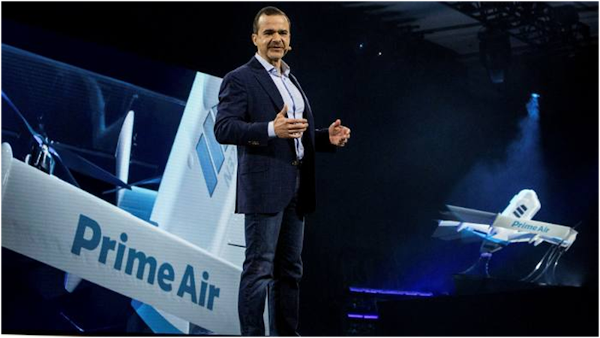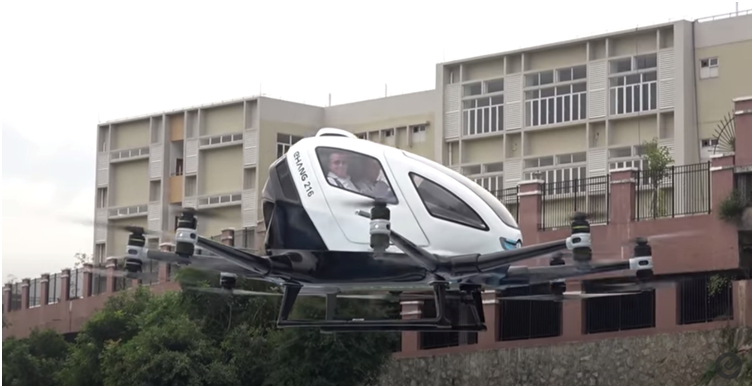
Charles R. Goulding and Adam Friedman consider how 3D printing might play into Amazon’s use of drone-delivered prescriptions.
Amazon’s business decisions have a tremendous impact on many business areas. On November 20, 2020, it was reported that Amazon is restructuring their drone design staff and outsourcing this work to Aernnova Aerospace and FACC Aerospace. It comes during a period when investment in drone businesses has increased at an exponential rate. Together, Amazon Prime Air and Amazon Pharmacy will influence the logistics, aircraft and pharmaceutical business as well as expand the market for consumer pharmaceutical deliveries and medicine shipment through drone air traffic.
For Amazon, the two aforementioned European companies have strong aerospace design operations and will bring benefits to the development of the Amazon MK27 drone. Aernnova, based out of the town of Alvala, Spain, is a multinational company that has been successful in airplane design. Aernnova has design factories in Mexico and has been very successful in designing both core and appendage parts from airplane manufacturers like Airbus, Boeing and Bombardier. FACC Aerospace is an Austrian aerospace design company that is famous for its Air Taxi, a futuristic helicopter designed for short travels of 15-80 miles. A video of a launch party for the Air Taxi can be seen here. Aernnova has extensive ties and large-scale manufacturing operations, while FACC Aerospace has chic designs and cutting-edge technology to create futuristic drones.
In fast-moving technical areas, one reason that companies convert from in-house staff models to external resources as Amazon has done with its Amazon Prime Air is that companies find it harder to obtain the constant experiences that keep an initiative current. Drone development and experimentation requires these companies to do beta testing and flight simulation, while also developing updates to their technologies. The use of Aernnova and FACC Aerospace is a move by Amazon to benefit from the two companies’ resources and breadth of experience with testing flight components.
Amazon has also recently been certified by the Federal Aviation Administration (FAA) to allow Amazon drones to make commercial deliveries. The FAA clearance gives Amazon a regulatory framework similar to those operating commercial airline services. UPS and FedEx had to obtain the same certification for deliveries being made using drones. With the improved drone technology, Amazon will be able to maximize its drone delivery service in various projects, especially for prescription drugs.

Amazon has created Amazon Pharmacy, based on the previous acquisitions of Pill Pack and the healthcare service company Halo. Consumers can now buy drugs directly from the main website, Amazon.com, which allows them to create a user health profile to complete transactions. Customers can also go from the main website to other webpages for prescription verifications. While many people are concerned about losing access to the tribal knowledge of the neighborhood pharmacist, however, AI-enhanced conversational commerce, through the likes of Amazon pharmacy, may eventually provide consumers with even better recommendations. Amazon Prime members can obtain a prescription savings benefit (PSA) for generic drugs and brand name drugs. Through Amazon Pharmacy, generic drugs can receive an 80% discount while brand name drugs can receive up to a 40% discount. Amazon has plans to distribute and connect with the major brick and mortar pharmacies, such as Rite-Aid, CVS and Walgreens. It is expected that Amazon Pharmacy will take advantage of its MK27 drones and use drone delivery as a preferred means of delivering drugs.
November 1, 2019 marked the first time prescription drugs were delivered by drone in the United States. The pandemic of 2020 has led to a greater market pool of prescription drug drone delivery, with CVS and UPS partnering in states like Florida to drone deliver drugs to housebound residents. Matternet, a Silicon Valley aerospace company, has made a tremendous impact on delivering specialty drugs and prescriptions to city centers in Switzerland, Germany, and many hospitals in the United States. Other companies, such as Flirtey, Zipline and Unmanned Systems Operations Group (USOG), have also completed successful deliveries for prescription drugs and have received FAA certifications alongside Amazon in 2020. This will create an even greater demand for pharmacy delivery in the United States.
With the proliferation of prescription drugs with drone deliveries, there will be many drone replacements that are needed for drones being used for the countless drug deliveries that will be made.
Not only does 3D printing allow for more efficient and lower-priced replacement parts, but it also allows for overall improved drone design using 3D printing to create and test prototypes. Amazon is indirectly making moves with 3D printing through the Aernnova staffing, which has been developing selective laser melting (SLM) over the last four years. This translates to 3D printing metallic airplane parts that Aernnova develops. Drones may indeed need better handling of packages in atmospheric conditions that can alter, even from outside the box, the solutions or chemical content of medications. Designing a 3D printed compartment that can protect medication in flight is a quintessential example of how 3D printing can provide for technologies for drones that would otherwise take years of work and tremendous resources.
Companies engaging in 3D printing for design and experimentation may be eligible for the R&D Tax Credit to support these initiatives.
The Research & Development Tax Credit
Whether it’s used for creating and testing prototypes or for final production, 3D printing is a great indicator that R&D credit-eligible activities are taking place. Companies implementing this technology at any point should consider taking advantage of R&D Tax Credits.
Enacted in 1981, the now permanent Federal Research and Development (R&D) Tax Credit allows a credit that typically ranges from 4%-7% of eligible spending for new and improved products and processes. Qualified research must meet the following four criteria:
- Must be technological in nature
- Must be a component of the taxpayer’s business
- Must represent R&D in the experimental sense and generally includes all such costs related to the development or improvement of a product or process
- Must eliminate uncertainty through a process of experimentation that considers one or more alternatives
Eligible costs include US employee wages, cost of supplies consumed in the R&D process, cost of pre-production testing, US contract research expenses, and certain costs associated with developing a patent.
On December 18, 2015, President Obama signed the PATH Act, making the R&D Tax Credit permanent. Since 2016, the R&D credit can be used to offset Alternative Minimum Tax (AMT) or companies with revenue below $50MM and, startup businesses can obtain up to $250,000 per year in cash rebates that can be applied directly to payroll taxes.
Conclusion
Amazon is a company where news events strongly influence the entire market. Moreover, its decision to use Aernnova Aerospace and FACC Aerospace for drone design has spurred its decision to make Amazon Prime Air an even more committed player in the drone distribution industry. Pharmaceutical drugs, as per Amazon Pharmacy, will be a major product for its drone delivery business. 3D printing and design can value add to the shipping and handling of products through drones.
